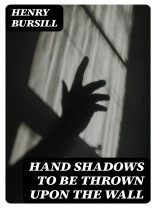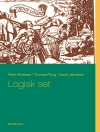In Henry Bursill’s ‘Hand Shadows to Be Thrown Upon the Wall, ‘ readers are transported back to the 19th century, a time when hand shadows were a popular form of entertainment. This book serves as a guide for creating intricate shadow figures using only one’s hands and fingers. The detailed illustrations and instructions allow readers to engage in a lost art form that was once a common pastime for families. Bursill’s literary style is straightforward and instructional, making it easy for readers to follow along and master the art of hand shadows. This book provides a unique look into the Victorian era’s fascination with visual entertainment and the simple pleasures it offered. As a piece of historical reference, ‘Hand Shadows to Be Thrown Upon the Wall’ offers a glimpse into the cultural interests of the past, making it a valuable resource for historians and enthusiasts of the era. Fans of arts and crafts, as well as those interested in historical forms of entertainment, will find this book both informative and enjoyable.
A propos de l’auteur
Henry Bursill (dates of birth and death unknown) was an English artist, known particularly for his contribution to the popular Victorian pastime of shadowgraphy or hand shadow play with his publication ‘Hand Shadows to Be Thrown Upon the Wall’ (1859). This slender volume, delightfully illustrated by Bursill himself, provided instructions for creating a variety of shadow images using one’s hands. It captured the imagination of both children and adults during an era that valued parlour games and home-based entertainment. Although Bursill’s personal history remains largely obscure, his book has endured as a charming testament to the whimsical side of Victorian culture and is often referenced in studies of nineteenth-century recreational activities. ‘Hand Shadows to Be Thrown Upon the Wall’ is notable not only for its creative content but also for its whimsical prose that accompanies the illustrations, encouraging readers to engage with the artistry and simplicity of shadow play. While Bursill may not have the extensive bibliography of his contemporaries, his unique contribution to the arts and entertainment of his time remains a curious footnote in the history of Victorian pastimes. However, beyond this intriguing work, little is documented about Bursill’s life, literary career, or other artistic endeavors, leaving much to the speculation of scholars interested in the more eccentric and ephemeral works of the period.












